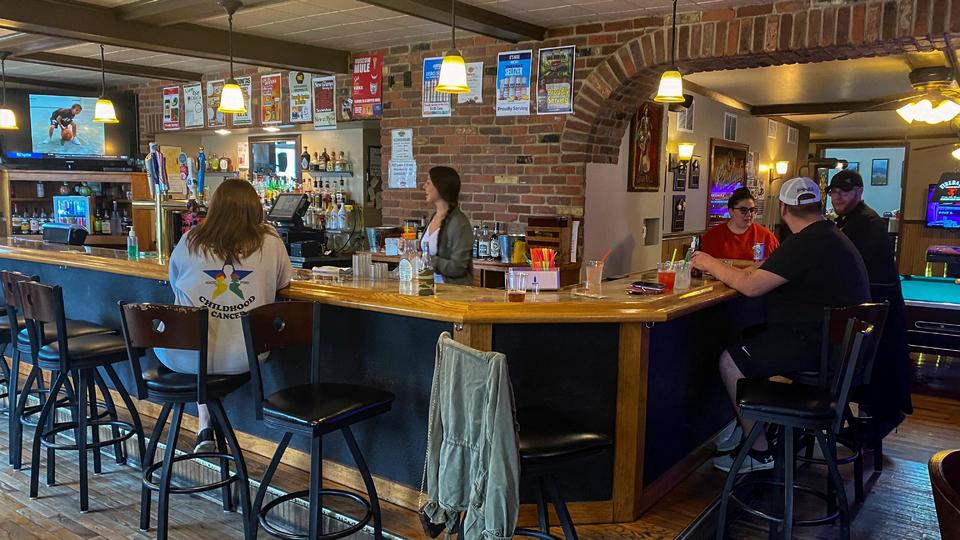
PORT WASHINGTON (Wisconsin, US). May 15 (NNN-AGENCIES) — Residents of Wisconsin flocked to bars after the court sided with Republican lawmakers who had argued the state’s top public health official exceeded her authority by imposing restrictions on businesses and daily life.
“Its Democrat Governor was forced by the courts to let the State Open,” Trump, a Republican, wrote in an early morning tweet, referring to Governor Tony Evers, a first-term Democrat. “The people want to get on with their lives. The place is bustling!”
Trump’s comments reflect growing tension in the country over how quickly to reopen states closed in March due to the pandemic, which has infected nearly 1.4 million Americans and taken nearly 84,000 lives.
The tension has split largely along political lines, with Republicans generally pushing to reopen more quickly to help the crippled economy and states led by Democratic governors proceeding more cautiously, citing concerns over public health.
A demonstration protesting Michigan Governor Gretchen Whitmer’s stay-at-home order took place on Thursday in the state capital Lansing. Whitmer, a Democrat, is a frequent target of Trump’s ire.
On Wednesday, Trump described as not acceptable a warning given by Anthony Fauci, who directs the National Institute of Allergy and Infectious Diseases, that a premature lifting of lockdowns could spark new virus outbreaks. Fauci had issued the warning in Tuesday testimony to Congress.
Pictures on social media showed residents of Wisconsin crowding in bars after the ruling, which invalidated the state’s “Safer at Home” order that had been extended through May 26 by health secretary-designee Andrea Palm.
“We further conclude that Palm’s order confining all people to their homes, forbidding travel and closing businesses exceeded the statutory authority … upon which Palm claims to rely,” the court said.
Nearly all 50 U.S. states have taken some steps to relax restrictions.
On Friday, New York state will allow construction and manufacturing operations to restart work in less populated areas outside of New York City, the epicenter of the pandemic in the country, accounting for more than a quarter of all deaths.
Meanwhile, nearly 3 million laid-off workers applied for U.S. unemployment benefits last week as the viral outbreak led more companies to slash jobs even though most states have begun to let some businesses reopen under certain restrictions.
Roughly 36 million people have now filed for jobless aid in the two months since the coronavirus first forced millions of businesses to close their doors and shrink their workforces, the Labor Department said Thursday.
Still, the number of first-time applications has now declined for six straight weeks, suggesting that a dwindling number of companies are reducing their payrolls.
By historical standards, though, the latest tally shows that the number of weekly jobless claims remains enormous, reflecting an economy that is sinking into a severe downturn. Last week’s pace of new applications for aid is still four times the record high that prevailed before the coronavirus struck hard in March.
Jobless workers in some states are still reporting difficulty applying for or receiving benefits. These include free-lance, gig and self-employed workers, who became newly eligible for jobless aid this year.
The states that are now easing lockdowns are doing so in varied ways. Ohio has permitted warehouses, most offices, factories, and construction companies to reopen, but restaurants and bars remain closed for indoor sit-down service.
A handful of states have gone further, including Georgia, which has opened barber shops, bowling alleys, tattoo parlors and gyms. South Carolina has reopened beach hotels, and Texas has reopened shopping malls.
Data from private firms suggest that some previously laid-off workers have started to return to small businesses in those states, though the number of applications for unemployment benefits remains high.
The latest jobless claims follow a devastating jobs report last week. The government said the unemployment rate soared to 14.7% in April, the highest rate since the Great Depression, and employers shed a stunning 20.5 million jobs. A decade’s worth of job growth was wiped out in a single month.
Even those figures failed to capture the full scale of the damage. The government said many workers in April were counted as employed but absent from work but should have been counted as temporarily unemployed.
Millions of other laid-off workers didn’t look for a new job in April, likely discouraged by their prospects in a mostly shuttered economy, and weren’t included, either. If all those people had been counted as unemployed, the jobless rate would have reached nearly 24%. — NNN-AGENCIES






